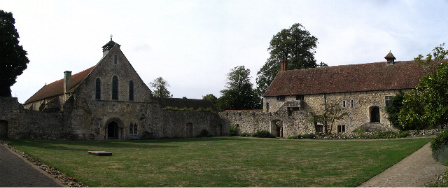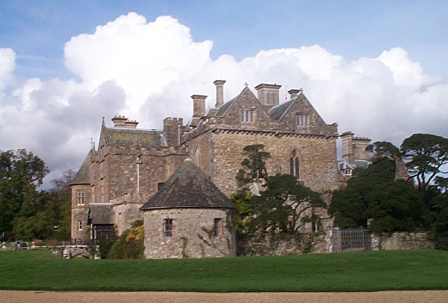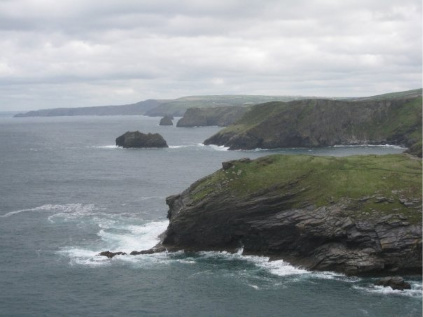Crantock Abbey: Difference between revisions
(Created page with '[[File:Crantockwiki.jpg|right|thumb|448px|The abbey cloisters with the estate chapel of St. Petroc on the left and the old refectory, now servants' quarters and stabling, on the …') |
No edit summary |
||
| Line 1: | Line 1: | ||
[[File:Crantockwiki.jpg|right|thumb|448px|The abbey cloisters with the estate chapel of St. Petroc on the left and the old refectory, now servants' quarters and stabling, on the right]] | [[File:Crantockwiki.jpg|right|thumb|448px|The abbey cloisters with the estate chapel of St. Petroc on the left and the old refectory, now servants' quarters and stabling, on the right]] | ||
Crantock Abbey is currently the seat of the [[ | Crantock Abbey is currently the seat of the [[Marquessate of Crantock|Marquess of Crantock]]. It is on the coast of north Cornwall with a wonderful view over the sea. The current inhabitant is the ancient and bedridden [[Archibald Layton|Lord Crantock]]. | ||
The original abbey was a 13th Franciscan monastery. After the dissolution of the monasteries by Henry VIII, most of the original abbey buildings were left in ruins and the land was given to the first Marquess. The manor house and chapel were built between 1558 and 1569, incorporating parts of the ruins into the buildings. Other ruins now stand as romantic follies on the estate. | The original abbey was a 13th Franciscan monastery. After the dissolution of the monasteries by Henry VIII, most of the original abbey buildings were left in ruins and the land was given to the first Marquess. The manor house and chapel were built between 1558 and 1569, incorporating parts of the ruins into the buildings. Other ruins now stand as romantic follies on the estate. | ||
Revision as of 02:16, 10 July 2010

Crantock Abbey is currently the seat of the Marquess of Crantock. It is on the coast of north Cornwall with a wonderful view over the sea. The current inhabitant is the ancient and bedridden Lord Crantock.
The original abbey was a 13th Franciscan monastery. After the dissolution of the monasteries by Henry VIII, most of the original abbey buildings were left in ruins and the land was given to the first Marquess. The manor house and chapel were built between 1558 and 1569, incorporating parts of the ruins into the buildings. Other ruins now stand as romantic follies on the estate.
The estate grounds are some of the finest in Cornwall including a large stretch of coastline, two beaches and moorland further inland. Though sadly neglected under the current Marquess' rule, there is much potential for improving the estate and exploiting its natural resources which include two abandoned tin mines.


Portrayed by Beaulieu Abbey. The view on the right is of the north Cornwall coast and was taken by Rose.